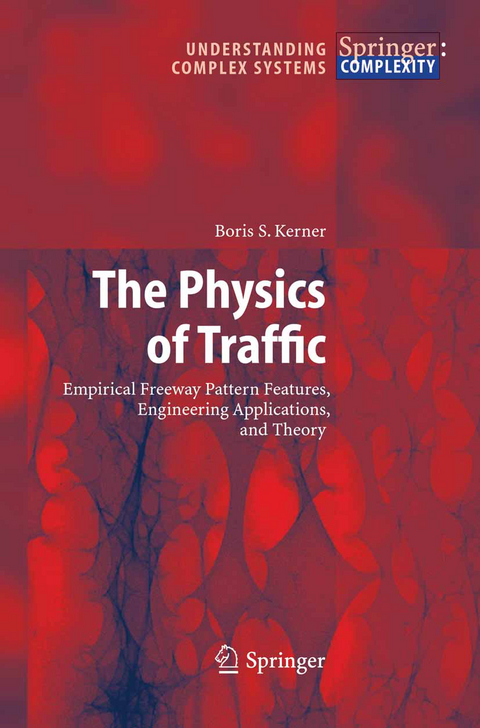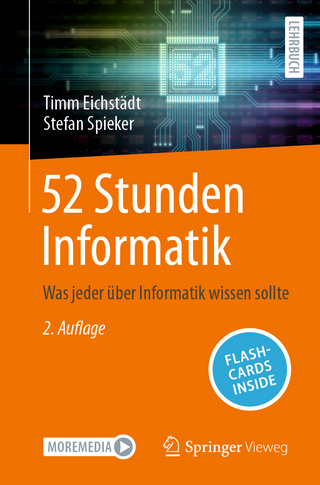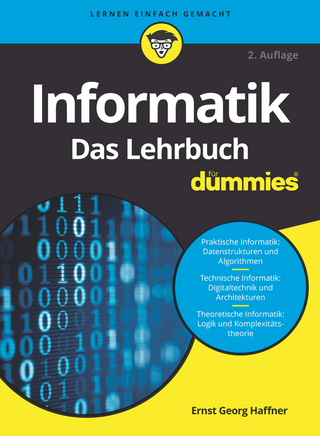
The Physics of Traffic
Springer Berlin (Verlag)
978-3-642-05850-9 (ISBN)
1 Introduction.- I Historical Overview and Three-Phase Traffic Theory.- 2 Spatiotemporal Pattern Formation in Freeway Traffic.- 3 Overview of Freeway Traffic Theories and Models: Fundamental Diagram Approach.- 4 Basis of Three-Phase Traffic Theory.- 5 Breakdown Phenomenon (F?S Transition) in Three-Phase Traffic Theory.- 6 Moving Jam Emergence in Three-Phase Traffic Theory.- 7 Congested Patterns at Freeway Bottlenecks in Three-Phase Traffic Theory.- 8 Freeway Capacity in Three-Phase Traffic Theory.- II Empirical Spatiotemporal Congested Traffic Patterns.- 9 Empirical Congested Patterns at Isolated Bottlenecks.- 10 Empirical Breakdown Phenomenon: Phase Transition from Free Flow to Synchronized Flow.- 11 Empirical Features of Wide Moving Jam Propagation.- 12 Empirical Features of Moving Jam Emergence.- 13 Empirical Pattern Evolution and Transformation at Isolated Bottlenecks.- 14 Empirical Complex Pattern Formation Caused by Peculiarities of Freeway Infrastructure.- 15 Dependence of Empirical Fundamental Diagram on Congested Pattern Features.- III Microscopic Three-Phase Traffic Theory.- 16 Microscopic Traffic Flow Models for Spatiotemporal Congested Patterns.- 17 Microscopic Theory of Phase Transitions in Freeway Traffic.- 18 Congested Patterns at Isolated Bottlenecks.- 19 Complex Congested Pattern Interaction and Transformation.- 20 Spatiotemporal Patterns in Heterogeneous Traffic Flow.- IV Engineering Applications.- 21 ASDA and FOTO Models of Spatiotemporal Pattern Dynamics based on Local Traffic Flow Measurements.- 22 Spatiotemporal Pattern Recognition, Tracking, and Prediction.- 23 Control of Spatiotemporal Congested Patterns.- 24 Conclusion.- A Terms and Definitions.- A.1 Traffic States, Parameters, and Variables.- A.2 Traffic Phases.- A.3 Phase Transitions.- A.4Bottleneck Characteristics.- A.5 Congested Patterns at Bottlenecks.- A.6 Local Perturbations.- A.7 Critical and Threshold Traffic Variables.- A.8 Some Features of Phase Transitions and Traffic State Stability.- B ASDA and FOTO Models for Practical Applications.- B.1 ASDA Model for Several Road Detectors.- B.1.1 Extensions of ASDA for On-Ramps, Off- Ramps, and Changing of Number of Freeway Lanes Upstream of Moving Jam.- B.1.2 Extensions of ASDA for On-Ramps, Off- Ramps, and Changing of Number of Freeway Lanes Downstream of Moving Jam.- B.1.3 FOTO Model for Several Road Detectors.- B.1.4 Extended Rules for FOTO Model.- B.2 Statistical Evaluation of Different Reduced Detector Configurations.- References.
From the reviews:
"For the analysis of complex spatiotemporal behaviour of traffic on motorways Kerner's book severs as an important basis for freeway traffic science that can be valuable for traffic scientists and engineers in solving many tasks in traffic engineering." (Hartmut Keller, tec-Traffic Engineering and Control International Journal of Traffic Management and Transportation Planning 2005, vol. 46, page 72-73)
"I commend Boris Kerner on his pioneering research on a new traffic theory... [This] is the first book I have read that offers detailed discussions about traffic congestion on freeways." --Henry Lieu, in Physics Today, November 2005
"Key topic of the book is the description of empirical spatiotemporal behaviour of traffic based on the Kerner's three-phase traffic theory. The content of the book is based on research work, which Kerner has performed ... . The comprehensive bibliography ... is impressive whereby they are referred to almost solely as reference numbers in the text. ... Kerner's book serves as an important basis for freeway traffic science that can be valuable for traffic scientists and engineers in solving many tasks in traffic engineering." (Hartmut Keller, tec-Traffic Engineering and Control, Vol. 46 (2), 2005)
"Boris Kerner presents in his book an in-depth and comprehensive presentation of his three-phase theory of freeway traffic flow. ... It might well mark a milestone in the long-lasting discussion on modeling of freeway traffic flow. ... The book is didactically very well written, it guides the reader through the material by providing figurative descriptions whenever possible before diving into mathematics. Every chapter starts and ends with summaries ... ." (Peter Vortisch, IEEE Vehicular Technology Magazine, June, 2006)
| Erscheint lt. Verlag | 9.12.2010 |
|---|---|
| Reihe/Serie | Understanding Complex Systems |
| Zusatzinfo | XXIII, 682 p. |
| Verlagsort | Berlin |
| Sprache | englisch |
| Maße | 155 x 235 mm |
| Gewicht | 1052 g |
| Themenwelt | Mathematik / Informatik ► Informatik ► Theorie / Studium |
| Naturwissenschaften ► Physik / Astronomie ► Astronomie / Astrophysik | |
| Naturwissenschaften ► Physik / Astronomie ► Theoretische Physik | |
| Naturwissenschaften ► Physik / Astronomie ► Thermodynamik | |
| Schlagworte | Calculus • Dynamical Non-Linear Process • Freeway Traffic Research • fuzzy • Model • Modeling • pattern formation • phase transition • Simulation • Spatial-Temporal Pattern Formation • Three-Phase Traffic Theory • Traffic Flow Theory • Transformation |
| ISBN-10 | 3-642-05850-7 / 3642058507 |
| ISBN-13 | 978-3-642-05850-9 / 9783642058509 |
| Zustand | Neuware |
| Informationen gemäß Produktsicherheitsverordnung (GPSR) | |
| Haben Sie eine Frage zum Produkt? |
aus dem Bereich


